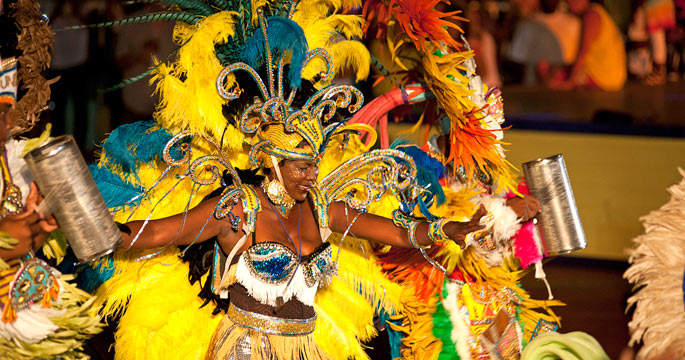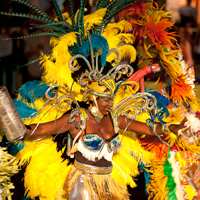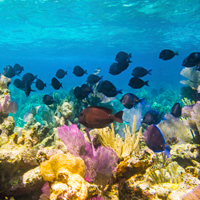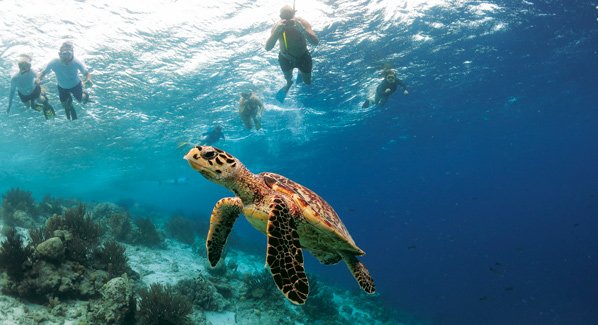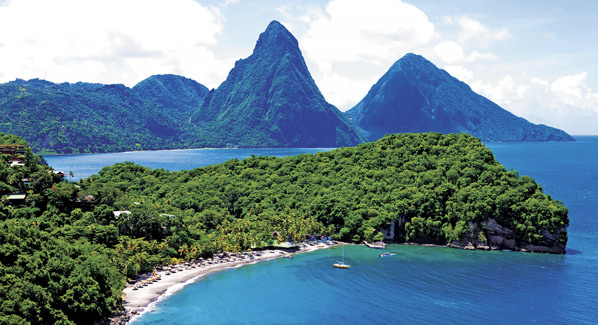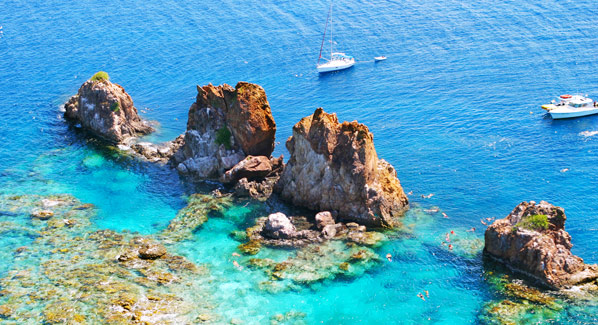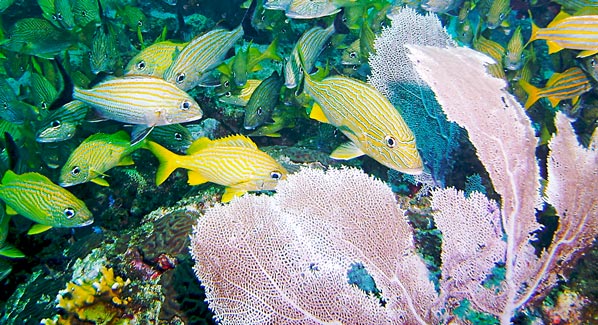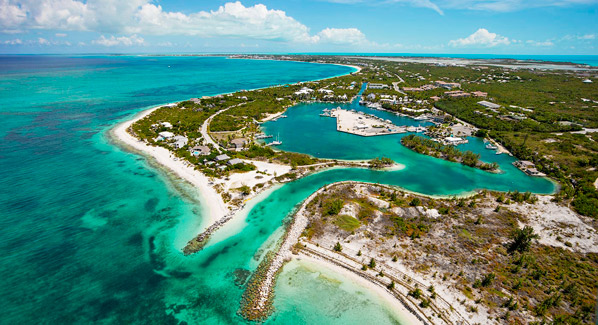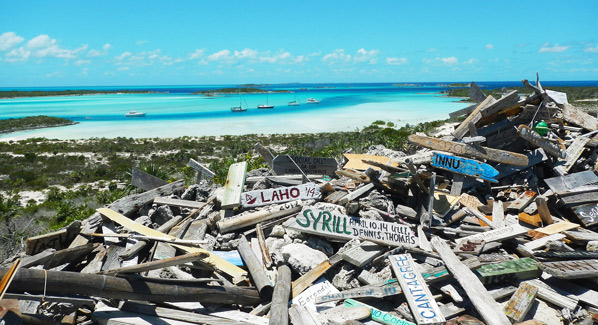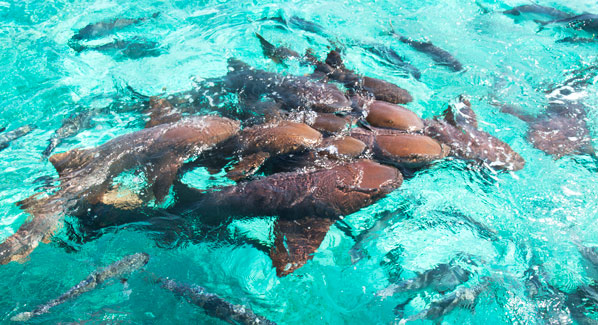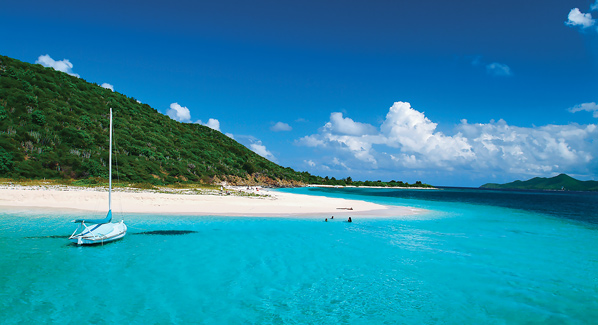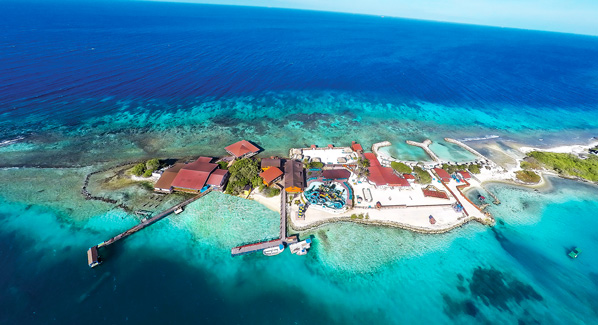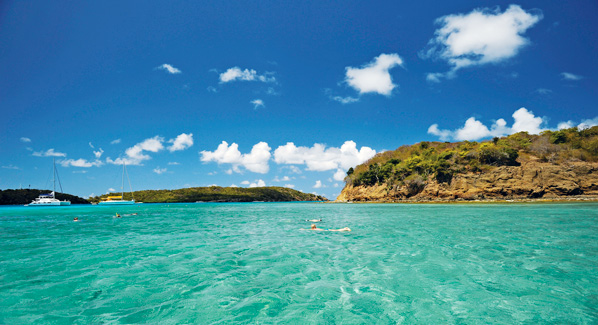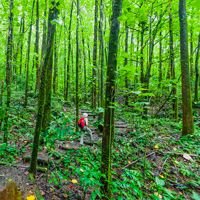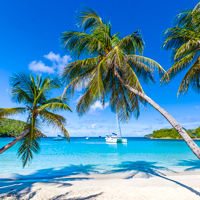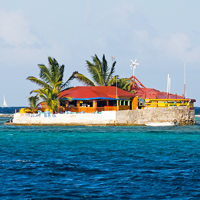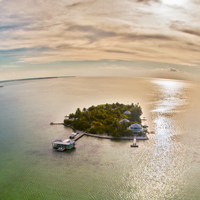The list of Caribbean hotels that make the pulse pound and your significant other look even more significant is a long one. Like beauty, romance is in the heart of the beholder. There are beach bungalows far from the madding crowd where it’s just you two and a couple of tiki torches and hotels in the middle of lively and historic cities; resorts with staff awaiting your every command and boutiques that let you be. Whatever your romantic style, here are our choice properties for your consideration.
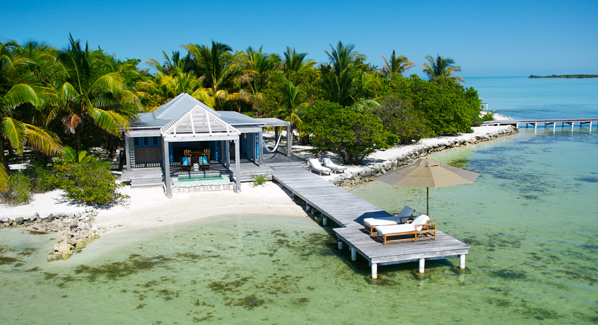
Your private sundeck awaits at Belize’s Cayo Espanto resort. This private island is just a few minutes by boat from the town of San Pedro, but a world apart from other resorts. Photo: Cayo Espanto
Isolated Splendor: Cayo Espanto, Belize
Even though it’s only three miles from bustling San Pedro, Cayo Espanto is a Caribbean cocoon, a private island with no access from the outside world save its own guest ferry. Seven villas are strategically spaced around the four-acre island to create maximum individual privacy. And each is unique: Casa Ventanas is built over the water and reached via a dock; Casa Olita has a private plunge pool, private beach and outdoor shower; Casa Estrella is two stories, with an elevated ocean view that goes on forever. On your way to the island, forego the ferry and arrive by helicopter to soak in spectacular vistas of sea and sky.
Once there, you’ll be greeted by the staff and your housemen who will take care of your every whim. The chef will drop by daily to discuss your dinner desires; your houseman will coordinate lunch and take you to a nearby deserted islet, where he’ll rake the sand to perfection and set you up with a cell phone to call him when you’re ready to return. After a delicious day of snorkeling, swimming, bonefishing or sunbathing you can return to your villa at Casa Brisa to take in the breezes or savor the sunsets from the west-facing Casa Solana, either villa is guaranteed to make your heart grow fonder.
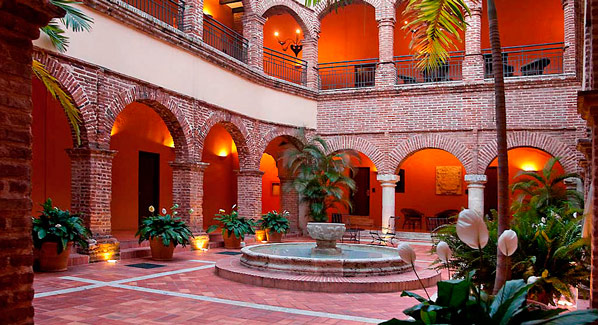
The architecture of the Hostal Nicolas de Ovando incorporates a trio of 500-year-old homes that are the oldest European-built stone structures in the Americas. Photo: Serge Detalle/Ovando House
Hot in the City: Hostal Nicolas de Ovando, Santo Domingo, Dominican Republic
Nicolas de Ovando arrived in the Dominican Republic in 1502 at the head of some 2,000 colonists, leading the first organized European settlement in the New World. The hotel, Hostal Nicolas de Ovando isn’t just named for him, it’s literally in his house. Actually it’s three houses and the first European-built stone dwellings in the Americas. They were erected in 1502 along Las Damas, the first street in what would become the headquarters of Spain’s American enterprises, Santo Domingo. Listed as a World Heritage Site by UNESCO, this hotel oozes historic charm: In fact, it would be accurate to say there is no more historic hotel in the western hemisphere. The stone-walled structures enclose a central courtyard graced by a fountain and surrounded on four sides by a two-story gallery, it’s arched openings and columns a rhythmic counterpoint to the brick and stone.
Inside, the owners have done a masterful job of blending modern decor with the structure, highlighting the eccentricities of the half-millennium-old buildings rather than hiding them. The 74 rooms aren’t cookie-cutter, as they’ve been designed to work with the building. There’s a pool in a walled garden with plenty of room for lounging and just outside the door all of the charms of the colonial city. Wandering the narrow, cobblestone streets past the home of the conquistador Hernán Cortés leads you to the Alcazár de Colón, the family home built by Diego Columbus, Christopher’s son, which is now a museum. Nearby there are quaint restaurants, small shops filled with art and keepsakes and the Cathedral of Santa María la Menor, the first Catholic church in the Americas. Buy a freshly rolled cigar at the shop across the street and check out menus at the nearby restaurants until you find one with a paella and an atmosphere that suits your mood. Afterwards, head back to the Ovando house and listen to the live jazz echoing off centuries-old bricks.
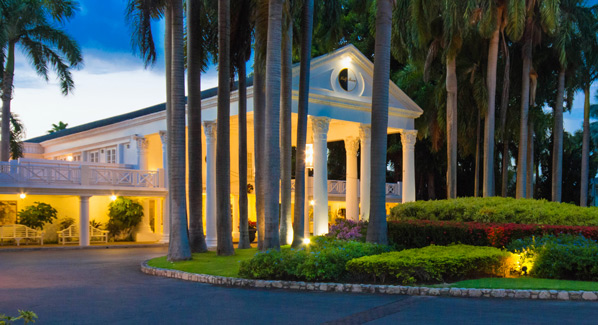
Jamaica’s Half Moon resort is a diverse and expansive property that commands a significant swath of coastline and offers private villas and cottages with direct water views. Photo: Half Moon Resort
Traditional Luxe: Half Moon, Montego Bay, Jamaica
If you suspect that the uber wealthy know something the rest of us don’t, you need no further proof than Half Moon, near Montego Bay, Jamaica. In the mid-1950s, a group of industrialists and heirs to some of America’s largest fortunes began to build winter cottages on a picturesque private beach. The cluster of cottages evolved into the full-size resort Half Moon, which attracted the rich and famous to luxuriate in the naughty atmosphere of the North Shore. Far from prying eyes in London, New York and Hollywood, celebrities could let down their hair for some serious fun. Errol Flynn spent years on the North Shore as did James Bond author Ian Fleming. JFK and Jackie stayed at Half Moon; so did Audrey Hepburn, Clark Gable, Joan Crawford and most of the current generations of British royals.
Half Moon now sprawls over 400 seaside acres, encompassing a Robert Trent Jones Sr. golf course, several dozen (that’s right, dozen) pools and a shoreline embroidered with small palm- shaded coves. There’s an equestrian center, multiple fine dining restaurants and a 68,000-square-foot spa. While you can be perfectly happy in one of the luxury rooms, if romance is what you’re reaching for, one of the original West End cottages or a Royal Villa offer the ultimate in pleasurable pampering. The residences are staffed and you’ll have a butler, cook and housekeeper making sure you want for nothing. You can loll by a private pool and just keep telling each other how lucky you are.
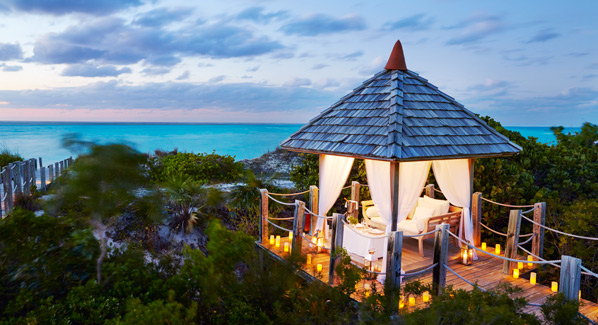
It will take a boat ride from Providenciales to reach the secluded grounds of Parrot Cay. Once there, guests have coral reefs and miles of secluded beaches to enjoy in solitude. Photo: Parrot Cay
Hip Hangout: Parrot Cay by COMO, Turks and Caicos
Owned by the stylish Como organization, Parrot Cay is a 1,000- acre private island just east of Providenciales in the Turks and Caicos. For such a secluded resort, it’s remarkably easy to get to: It’s a half-hour boat ride from the well-served airport in Provo, just south of the Bahamas. The name and location attract celebrity A-listers like Ben Affleck and Christy Turlington with simplicity and superior service. The design is understated: modern but with a clear nod to the regional plantation style. If you’re looking for acres of hand-carved mahogany paneling, this isn’t your jam. But if you’re looking for acres of deserted beach, this is the place. There are three miles of powder-white sand lapped by calm, laser-green water, the Atlantic swell tamed by the offshore reefs.
Grab a lounger and soak up the ambience at the infinity-edge pool overlooking the ocean; when you feel ambitious, take a ramble down the beach and remember to look down, there are beautiful shells underfoot, including partridge tuns, turban tops, sand dollars and queen conch. Turks and Caicos is one of the few places where you can reliably see live queen conch underwater, and the empty shells wash up on beaches and can be found in shell piles left behind by local fishermen. There are water toys on the beach or you can arrange a private boat excursion to Iguana Cay or fish on the enormous flats behind the islands. The resort rooms are clustered around the main pool, but for enhanced privacy oceanfront villas have their own pools—some are heated, ensuring year-round 24/7 skinny dipping. If you’re not coupled out by then, head for a his and her massage in the very private treatment cottage at the highly rated Shambhala Retreat.
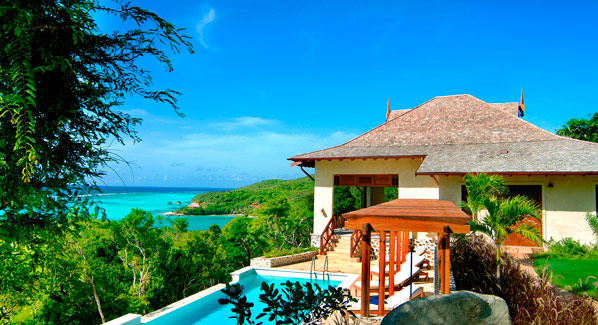
The Canouan Resort sprawls over expansive and meticulously landscaped grounds that rise from the beach to high bluffs that provide expansive views of the central Grenadines and the Caribbean Sea. Photo: Canouan Resort
The Jet Set: Canouan Resort, Canouan Island, St. Vincent and the Grenadines
Canouan is not a place you get to instantly. It does have an airport, but the closest international service is in St. Vincent or Barbados, so you have to want to go there. And you definitely want to go. Canouan Resort at Carenage Bay occupies about a third of a 1,200-acre former plantation, complete with a 17th- century Anglican church. Down here south of St. Vincent, the islands are lumpy leftovers from a series of volcanic explosions. The resort fronts the beach and spills up onto the hill. Most of the rooms and villas are beachfront, though a few very private dwellings are perched on a 900-foot bluff with views that reach all the way to the Tobago Cays.
The property owners are Italian and there’s a sense of style throughout, especially in the restaurants and Bellini’s bar, so pack your killer heels and some sparkly accessories. You’ll get to dinner without breaking a sweat, too. You’ll be given a golf cart on arrival so you never have to walk unless you want to. The property received major upgrades just last year and a new ultra-exclusive boutique, Pink Sands Club, opened next door so expect to see private jets lined up on the runway. When you’re not relaxing over a fine wine just drinking in the ambience, stroll Shell Beach or take a charter to snorkel with turtles in the Tobago Cays.

